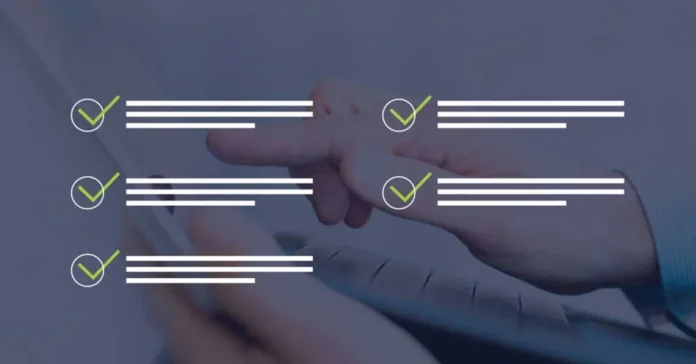
The importance of efficient and effective procurement processes cannot be overstated. As organizations strive to streamline their operations, reduce costs, and enhance their competitive edge, selecting the right purchasing software becomes a pivotal decision.
This critical choice involves a thorough understanding of your business’s unique needs, a grasp of the diverse purchasing software options available in the market, and the foresight to align your selection with your long-term growth objectives. With the right purchasing software in place, you can optimize your procurement processes, bolster vendor relationships, gain real-time insights into spending, and, ultimately, bolster your bottom line.
But with countless options available, how do you choose the best purchasing software? Here’s a comprehensive guide to selecting the perfect Purchase software For your business.
Understand Your Business Needs
One of the most critical steps in this pursuit is choosing the right purchasing software. This decision can have far-reaching consequences, impacting your operational efficiency, cost management, and overall competitiveness.
Therefore, the first step is to assess your unique business requirements meticulously. Understanding your business needs is not just a preliminary step; it’s the cornerstone upon which you’ll construct a procurement process that aligns seamlessly with your organizational goals and objectives.
This is what you should understand:

Scale
One of the initial considerations should be the scale of your business. Are you a small business or a large enterprise? The size of your operations can dictate the features you need. Small businesses may prioritize cost-effective solutions, while larger enterprises may require more complex functionalities to manage extensive procurement processes effectively.
Industry Specifics
Next, delve into the specifics of your industry. Some software solutions cater to specific industries, offering tailored functionalities that can streamline processes unique to your business sector. Selecting software designed with your industry in mind can save you time and resources in customization.
Integration Needs
Consider the other systems you use within your organization. Your purchasing software should seamlessly integrate with these systems. Whether it’s your accounting software, inventory management system, or customer relationship management tool, integration ensures that data flows smoothly and reduces manual data entry.
Key Features to Look For
To make an informed choice, one must be acutely aware of the key features that distinguish high-quality purchasing software. These features are the pillars upon which your procurement process will stand, and they can significantly impact your organization’s overall efficiency, transparency, and success.
To choose the optimal purchasing software, you must gain a deep understanding of your organization’s specific requirements. This entails a thorough examination of your current procurement processes, a meticulous assessment of your business objectives, and a keen awareness of the challenges and opportunities within your industry.
These are the features you should look for:
Automated Purchase Orders
One of the most critical features is the ability to automate purchase orders. This streamlines the order creation process, reducing the chances of errors and delays in procurement. Look for software that can generate purchase orders automatically based on predefined criteria.
Vendor Management
Effective vendor management is crucial for maintaining good supplier relationships and monitoring vendor performance. Look for software that centralizes vendor interactions, allowing you to track orders, payments, and communication in one place.
Budget Monitoring
Staying within your allocated budget is essential for financial stability. Purchasing software should offer robust budget monitoring tools, providing real-time insights into your spending. This helps prevent overspending and allows for quick adjustments when necessary.
Real-time Analytics
Access to up-to-date data is invaluable for making informed decisions. Look for software that provides real-time analytics and reporting features. This allows you to track key performance indicators, identify trends, and adjust your procurement strategy as needed.
User-Friendly Interface
Minimizing the learning curve for your team is crucial for a smooth transition to the new software. Choose software with an intuitive and user-friendly interface. Training your team should be a straightforward process, enabling them to adapt quickly.
Do Your Research

Once you clearly understand your business needs and the essential features you require, it’s time to delve into the research phase. By gathering information and insights from diverse sources, you equip yourself with the knowledge necessary to select purchasing software that will not only meet your current needs but also evolve with your organization in the face of ever-changing challenges and opportunities.
How to do your research?
Read Reviews
User reviews can provide invaluable insights into the software’s performance and reliability. Platforms like G2 Crowd, Capterra, and Trustpilot offer user-generated reviews that can give you a sense of what it’s like to use the software in real-world scenarios.
Ask for Recommendations
Reach out to peers in your industry for their software preferences. Colleagues and business associates can offer valuable recommendations based on their own experiences. These firsthand accounts can help you narrow down your options.
Request a Demo
Before committing to any software, it’s advisable to request a demo from the provider. Testing the software in a real-world setting within your organization allows you to assess its compatibility with your needs and workflow. It also allows you to ask questions and clarify any doubts.
Consider the Cost
Cost considerations often emerge as a pivotal factor in the selection of purchasing software. It’s a realm where the value equation extends beyond the initial price tag and delves into the long-term financial implications. The wise stewardship of financial resources is fundamental, and your choice of purchasing software should align harmoniously with your financial strategy.
What to consider?
Pricing Model
Understand the pricing model of the software. Some solutions charge a monthly subscription fee, while others have a one-time upfront cost. Consider which model aligns better with your budget and financial strategy. Remember any ongoing subscription costs, as they can add up over time.
Hidden Costs
In addition to the base price, be on the lookout for hidden costs. Some software solutions may charge extra for setup, training, or access to premium features. A transparent pricing structure ensures you can budget accurately.
Evaluate Customer Support

Reliable customer support is vital, as you’ll likely encounter questions or issues during your software implementation and usage.
Availability
Ensure the software provider offers timely support, whether it’s through chat, email, or phone. Availability during your business hours is critical, especially if you operate globally and require support around the clock.
Training
Some providers offer training sessions to help your team get acquainted with the software. Consider whether this training is included in the package or if it comes at an additional cost. Well-trained users are more likely to utilize the software to its full potential.
Future-Proof Your Investment
As your business evolves and grows, the software solutions you rely on must adapt and evolve alongside you. To ensure that your investment in purchasing software remains long-lasting and valuable, consider strategic steps.
Scalability
Choose a solution that can scale with your business. As you expand, your software requirements may become more complex. A scalable solution can adapt to your changing needs without requiring a complete overhaul.
Stay Updated
The technology landscape is ever-evolving. Opt for a software provider that regularly updates its features to stay current with industry trends and technology advancements. This ensures your software remains relevant and continues to meet your needs.

Conclusion
Selecting the optimal purchasing software is an impactful decision that reverberates through your business operations. It is a choice that can either catalyze efficiency, curb costs, and fuel growth or impede progress and hinder competitiveness. The crux of this decision-making process lies in understanding your unique needs comprehensively, conducting exhaustive research, and embracing a forward-thinking perspective for future growth.
Devoting time and effort to this pivotal decision is an investment that pays dividends. It paves the path toward a procurement process characterized by streamlined operations, cost-effectiveness, and adaptability to evolving business landscapes. In this digital age where the right software can be a transformative catalyst, your thoughtful selection will be the cornerstone upon which your organization’s success is built.








